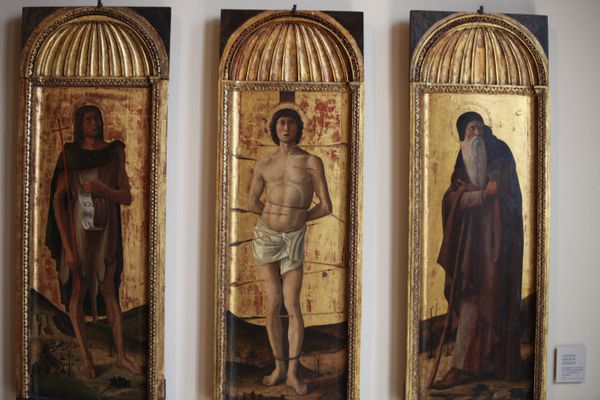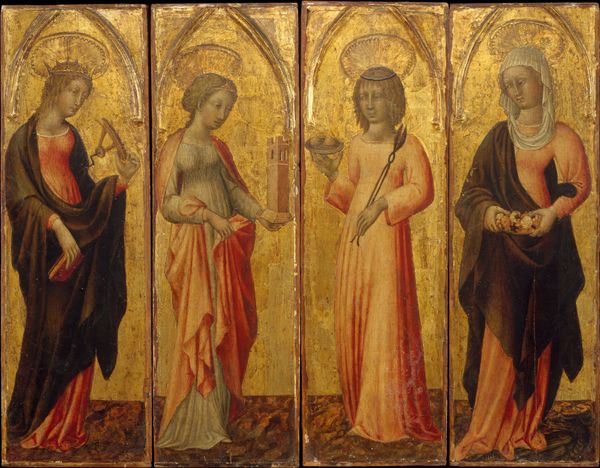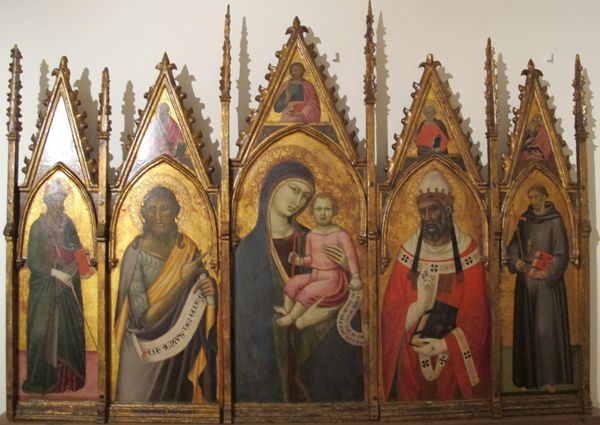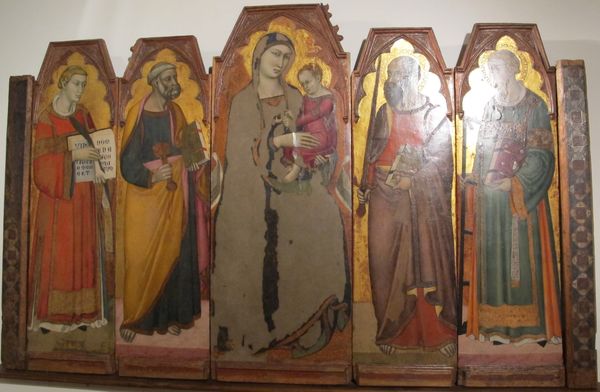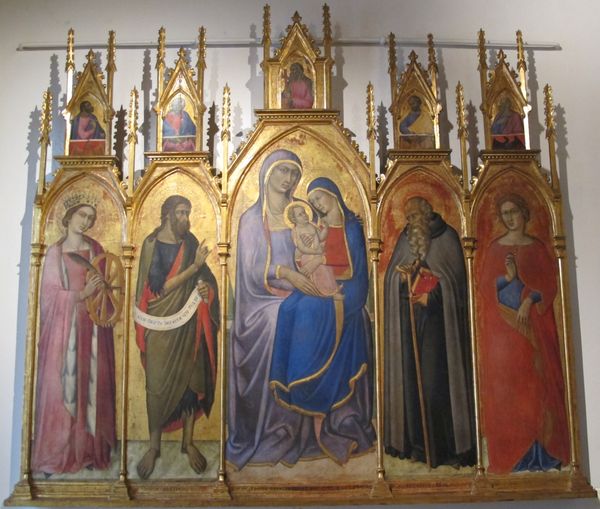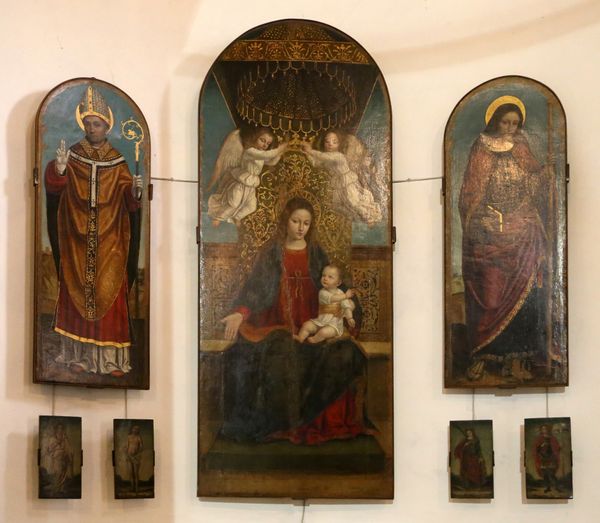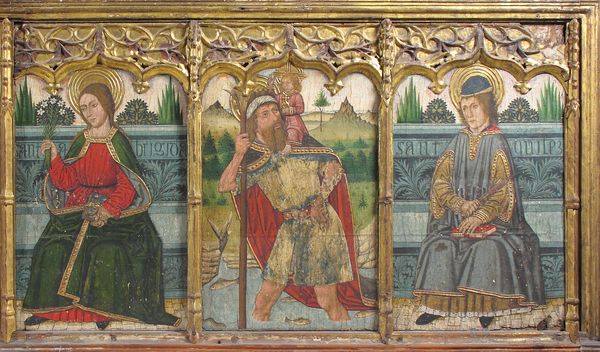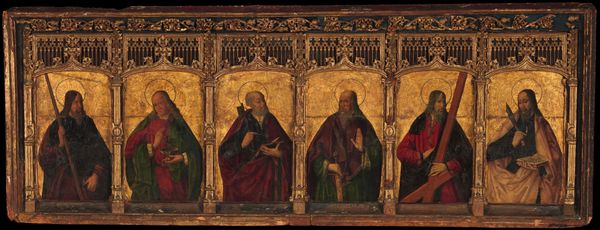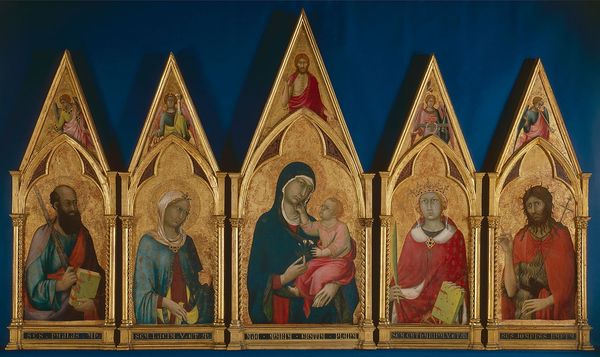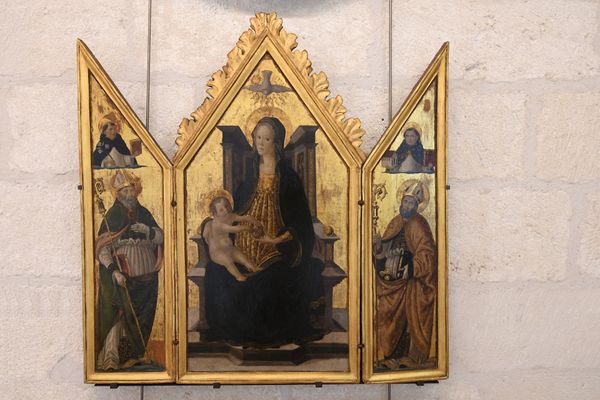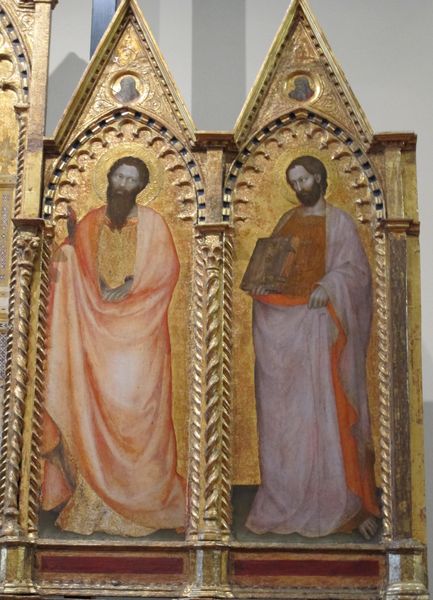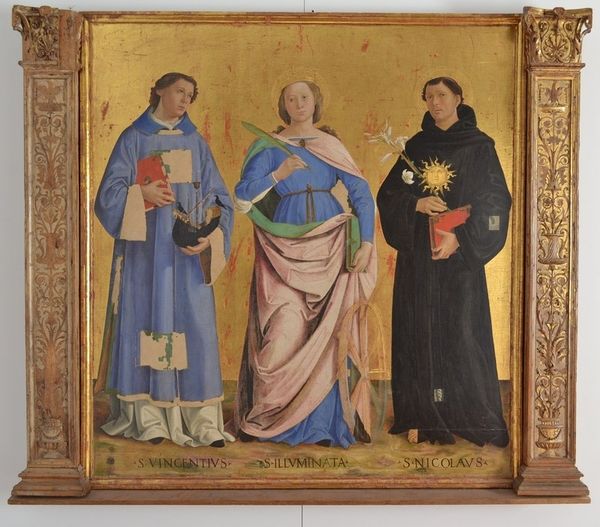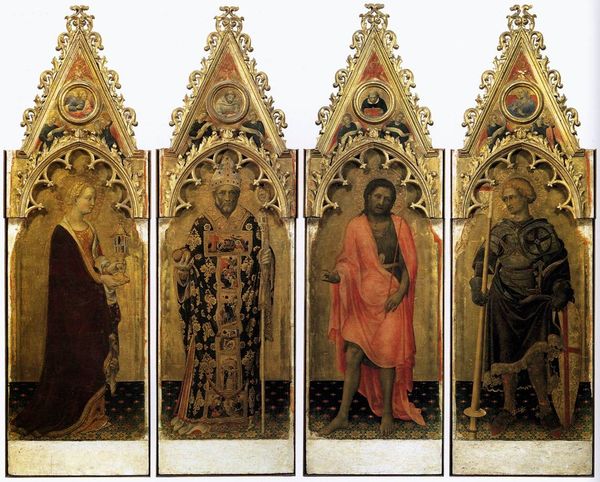
tempera, painting
#
portrait
#
tempera
#
painting
#
holy-places
#
figuration
#
underpainting
#
painting painterly
#
neutral brown palette
#
history-painting
#
academic-art
#
italian-renaissance
Copyright: Public domain
Editor: This is a detail from Gentile Bellini’s "Trittico della Natività," made around 1470 using tempera. I'm really drawn to the materiality, especially the use of gold leaf—it makes the figures almost otherworldly. What can you tell me about this piece? Curator: The use of tempera and gold leaf here is particularly interesting when considering its function. These materials weren’t simply aesthetic choices; they speak to the economic systems that supported the creation of religious art. Gold, for example, represents not just divinity but also wealth and power of the patron. What do you think about how these material choices blur the line between devotion and commodity? Editor: That's interesting! I hadn't considered that aspect of the gold before. Do you think that using such costly materials elevates it beyond craftsmanship and more towards high art? Curator: Well, it’s more complex than just elevating it. The labor involved in applying the gold leaf, grinding pigments for tempera, and preparing the wood panel was intense and specialized. The guilds and workshops producing pieces like this operated within a rigid social hierarchy, from the master artist down to the apprentices. So, can we really separate the ‘art’ from the means and conditions of its production? Consider where Bellini's workshop stood in the economic landscape of Renaissance Venice. Editor: I suppose not. Thinking about all the steps, from material sourcing to application, does reframe the art piece as part of the broader society and production of goods, I can see how that impacts my perspective now. Curator: Exactly. It pushes us to consider the work, the object, within its total environment and understand its relationship with the economic and political systems that supported its creation. Editor: I guess I will look at art pieces more critically now in regard to material value and where everything came from to construct it. Thanks!
Comments
No comments
Be the first to comment and join the conversation on the ultimate creative platform.
